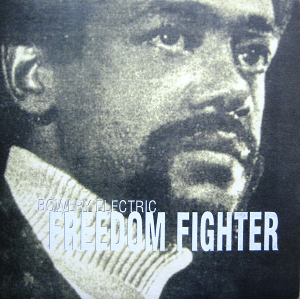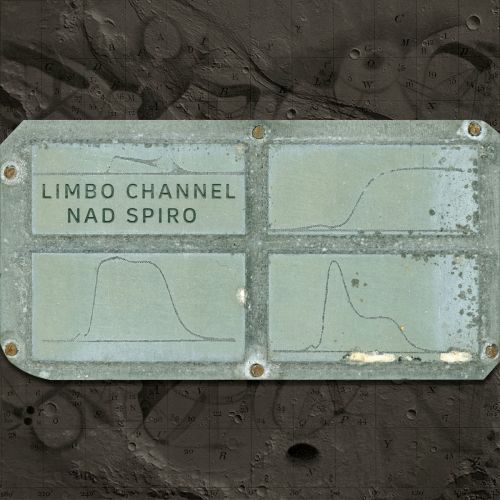 Sometimes, you just want to write a review made up of ephemera and snatches of observations rather than, y’know, syntactically cogent sentences. I would say “poetic”, but what I really mean is that I find my own notes hilarious and disingenuous and the idea of having a series of shit kōans in place of a record idea is amusing.
Sometimes, you just want to write a review made up of ephemera and snatches of observations rather than, y’know, syntactically cogent sentences. I would say “poetic”, but what I really mean is that I find my own notes hilarious and disingenuous and the idea of having a series of shit kōans in place of a record idea is amusing.
Viz:
“…doomy chords; Rowe vigorously opens crisps.”
“c20m, CD2 – Much Pow. KEITH POWE.”
“Someone has definitely brought bees. They’re still napping, but angry to be disturbed.”
“Boxes unpacked malevolently; evil packing tape sounds.”
It says something about the nature of the record that something faintly pontillistic like that nearly seems appropriate; Enough Still Not To Know is a record with a lot of content, but a lot of space. Actually, scratch that — there’s a lot of parity, whereas space always implies a gulf rather than a tension (to me).
It’s something like freely improvised but has the sorts of granular attention to detail that can make it closer to composition. There’s often something very Feldman-y about Tilbury’s playing, but Feldman (or at least later Feldman, with which I’m most familiar) was one for drawing out thematic material; here, thematic material rarely (directly) returns and while it’s a whopper of a four CD box set, there’s rarely extended periods of thematic development. That’s not a criticism — it’s a very odd thing to say that, over four CDs, Tilbury and Rowe spend very little time on a single idea — just five or ten minute sections. It’s never a case of (one of my least favourite tropes of free improv) rushing to get every idea out, but both players have an intimidating litany of ideas and techniques. And it is, of course, entirely anticipated that Tilbury should bear melodic and harmonic scars from Feldman — he’s one of Feldman’s most frequent and exciting Feldman interpreters. It’s really easy to do a kind of ersatz Feldman, but getting into the marrow of his approach, the complexity of his stresses and furtive time signature changes against an apparently spare harmonic world, and do so in an improvisatory context, is something that I’ve only ever heard Tilbury pull off. The set is intended as a soundtrack to a video work by Kjell Bjørgeengen, so there’s a bit of a looming sense that it’s missing a medium; whether that’d accentuate matters or detract seems moot here. I could’ve been thorough and found out what the work’s like but, well, you don’t really need to watch the film Purple Rain to appreciate the album Purple Rain and if it’s an aphorism about Prince, it’s an aphorism that applies to all of music. Plus, there are no more useless and bollocky non-descriptive words for music than “cinematic” and as soon as you involve visual stuff in the matter there’s ancilliary planes to music and that’s just a complexity I’m not after. Or I should — my approach tends to be that the nature of visual culture is such that the visual subordinates the aural, which isn’t a criticism of either medium, but does describe a tendency in listening to let the eyes do the talking.Hello, you’ve met me in a flowery writing mood. Welcome.
As a whole, Enough Still Not To Know is a surprisingly quick listen — as I say, both players are plugging through ideas at relative pace, and it doesn’t feel like a turgid or exhausting listen. Rowe seems to be taking the rule of “if you can’t hear the other person, you’re playing too loud” to the extreme — he’s mostly well into the background, venturing largely into low-volume noises that by dance around the thresholds of audibility even if the record’s cranked. Which is to say, a problem (that is entirely not the fault of this record) — it’s a gorgeously recorded record with a breadth of very close sounds; I live next to a train station and my headphones aren’t much cop. So where CD 3 has some really low rumbles (I’m guessing an e-bow on the piano’s lower strings), I was clamouring to figure out if it was the 19:50 to London or the CD; elsewhere, I was trying to figure out if Rowe was making the sound of the kettle. It was, in fact, my kettle that was making the sound of a kettle, as kettles are wont. That old anecdote (I’ve only ever read it in Cage) of Christian Wolff saying that “…the sounds of the environment were in no sense an interruption of those of the music” is obviously an imperative to people like me, but this is such a crisp and delicate record that it seems a shame to have its tension distressed by the binmen.The liner notes are… relatively enigmatic, evoking a sense of some of the conditions, but not a great deal on technique (etc). Which is fine, that’s how these cats roll. One of the more interesting things is Rowe’s “I attempt to emit a single sound with exquisite care, with degrees of self-consciousness, and reflect on its construction, hoping to avoid the danger of effect over evidence”. Now, this line of the “danger of effect over evidence” is a bit of a sticky thing for me. Methods are methods and that’s his thing, but his is a very sensual way of playing (I’m sure he’d make a killing if Rowe diversified into Foley work) and I read into that ideas of non-sentimentality, trying to document merely sounds. It could be I’ve mis-read that, but it’s not a record that is entirely divested of emotional impact with its rarely perma-throttled tensions and variegated attacks; while there’s a lot of opening and closing valves, there’s never a sense that the players are in isolation, or working towards different aims.
I don’t believe Enough Still Not To Know is a pure exercise in timbral scientism either — there’s a moment on CD2, about quarter-way through, where the combination of tones from piano and heavily-prepared guitar slip just ever so slightly to create a kind of shrill clarinet effect; I’d imagine it’s something that’s only ever the result of happenstances. There’s touches of mild slapstick in some of Tilbury’s playing (although not quite so gauche as to be entirely signposted like that) — Tilbury’s left hand erratically mocking and falling out of time with a relatively steady right hand, the left quickly getting more irate. I also wrote down the first time I listened that there was a bit that sounded like Tilbury had stood on a chair of the “piano classic” “Chopsticks” and was hacking away at its legs, but I couldn’t find that again on subsequent listens.Yeah, ok, so synopsis time — Enough Still Not To Know is a gorgeous record, some utterly top-notch playing from some utterly top-notch players. It’s a long one but it’s definitely worth it, and it’s relatively opaque in intent; so I didn’t feel entirely obliged to listen to it back-to-back. I’m not sure I’d suggest it as a primer to either’s work — unless you’re already into hyper-concentrated, delicate and exhaustive playing — but it’s definitely one for the heads.
-Kev Nickells-



